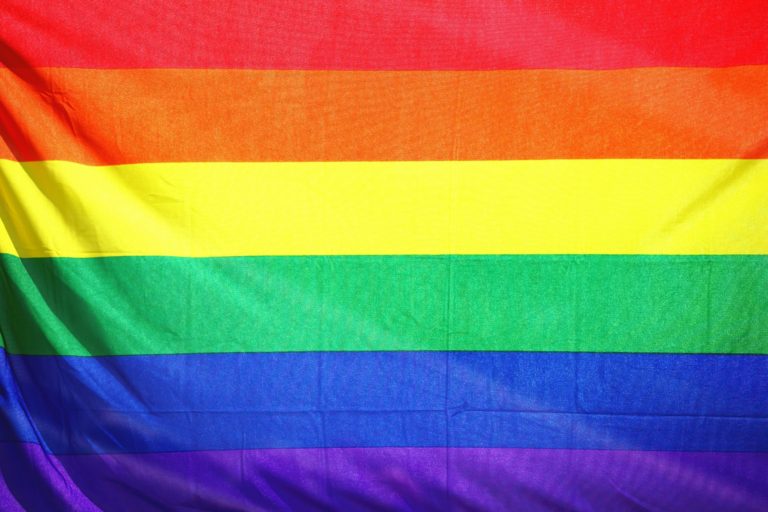

Flags aren’t particularly important in themselves, and adoration of them is far more American than European. Canada gets it about right: Flags matter, but, in the final analysis, it’s just a flag. Except, of course, when it isn’t.
A flag can be an outward symbol — a public token — of something profoundly important. In the case of the Pride flag, it’s precisely that. The rainbow colours have a specific meaning. But to most people, the rainbow flag simply represents acceptance and tolerance — specifically, of LGBTQ2 people, but, by extension, of everybody. It’s that vague, sometimes sugary, and absolutely glorious Canadian value of tolerance.
It’s easy to mock, of course, but ask Canadians who’ve been raised in countries where no such tolerance exists if they feel cynical. That we may now take it for granted doesn’t make it any less splendid. It has come at a cost, is still very much a work in progress, and has been hard-won, especially when it comes to sexuality.
Which makes Thursday evening’s debate at the Toronto Catholic District School Board (TCDSB) about whether to mark June Pride month and fly the flag at their schools and sites so disturbing. After a heated and sometimes acrimonious discussion, the board voted to commemorate Pride every June going forward, but this comes after it removed its LGBT Youthline — which support kids’ mental health, specially during pandemic isolation — then restored it only after severe criticism. Other Catholic boards have agreed to mark Pride, but not all. For example, the board in Halton, located west of Toronto, has refused to fly the rainbow flag at its schools, which are attended by 37,000 students.
To most people, this all seems jarringly anachronistic — like a controversy of a former generation. But within the Catholic Church, it’s far from a subject of the past, and very much an open wound in its teaching. The catechism, the official text of the church, calls for respect for gay people, but describes “homosexual acts” as being of “grave depravity,” “contrary to natural law,” and “intrinsically disordered.” It’s an appallingly disingenuous and even dishonest approach, in that it assumes some sort of clinical separation of LGBTQ2 people from who they actually are and how they were born. It explicitly states that the active romance, relationship, and love between two people of the same gender is wrong and disordered.
I could write volumes about how this is contrary to the Gospels, has nothing to do with the message of Jesus, and how the Catholic Church is hypocritical in that so many of its clergy are gay, not all of them celibate. In his book “The Changing Face of the Priesthood,” Father Donald Cozzens claims that around 58 per cent of priests are homosexual, the percentage even higher for younger priests. But the point is that the church’s beliefs are the church’s beliefs. It has a right to be wrong – although there are some valid questions to be asked about the morality and even the legality of its statements about sexuality. The more immediate question, however, is why school systems based around an institution that embraces such teaching continue to receive public funding?
At the time of the school system’s origin, Catholics formed a minority in Canada, and sometimes faced discrimination. They deserved protection. But now, Ontario is almost a third Catholic, with Protestants composing less than a quarter. In the country as a whole, Catholics make up 38 per cent of the population, the largest single religious denomination. The old arguments about special status simply no longer apply.
Change isn’t as complex as some people argue. Both Quebec and Newfoundland passed constitutional resolutions to end religious funding, and Manitoba changed more than 130 years ago. Nova Scotia, New Brunswick, P.E.I. and B.C. didn’t have separate Catholic school systems when they entered Confederation, so there were no constitutional demands for its provision. Catholic high schools in Ontario weren’t publicly funded until the 1980s.
The reality is that Catholic education is far from the orthodox, strict model that once existed. Priests and nuns don’t dominate, and are sometimes even rejected, and staff, as well as students, may have more of a cultural than theological commitment to the faith. All of the evidence indicates that Canadian Catholics have very similar views on equal marriage and LGBTQ2 equality to those of their non-Catholic compatriots, and Catholic premiers and prime ministers have often led the way when it comes to legislation to advance equality. Even the Papacy makes the odd positive comment, but too often walks the progress back again.
But there have also been examples of publicly-funded Catholic schools taking students to anti-abortion rallies, and of gay students being bullied. In March, Cardinal Collins, the most senior Catholic cleric in English Canada, wrote to the TCDSB warning that “social trends antagonistic to the Gospel gather strength” and that June – Pride Month – should be dedicated to the Sacred Heart of Jesus. His message was clear. It must be agony for gay teenagers to see their very being discussed in such a way, even when votes are eventually positive.
It’s a mess, full of contradictions, inconsistencies, and obfuscation, and politicians are terrified of the electoral consequences of challenging the public funding of Catholic schools, even though the expense of duplication is obvious and proven. But as Canada moves further in its journey of equality, and as a new generation of Catholics, as well as non-Catholics, can’t even comprehend discrimination against their gay friends, something has to give. I honestly can’t see it being the central teaching of the Roman Catholic Church.
MORE COREN: The last thing LGBTQ2 Canadians need is MPs misquoting scripture at them
The views, opinions and positions expressed by all iPolitics columnists and contributors are the author’s alone. They do not inherently or expressly reflect the views, opinions and/or positions of iPolitics.